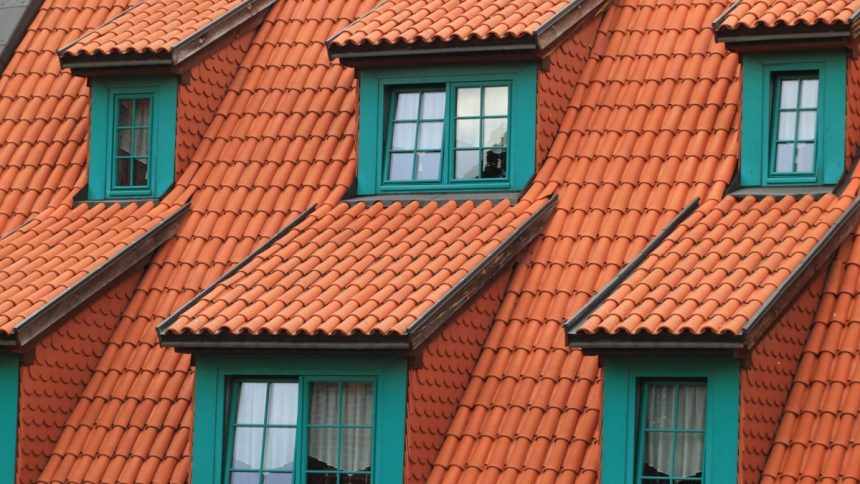The care of your roof may not be at the forefront of your mind constantly, but it’s a surefire way of avoiding costly repairs later on. Your roof basically shields your home from different weather elements. So, how should you go about maintaining it so that it lasts for the longest time possible? Below are ten practical methods to get the best out of your roof and extend its life, explained in a way that makes comprehension and implementation easy as pie.
Invest in Storm-Resistant Roofing Materials
If you happen to live in a region where storms frequently take place, this tip is perfect for you. Choosing the right material can make all the difference between your home getting badly dinged up by strong winds, hail, or heavy rain. Metal roofing has been claimed to be one of the more enduring options available. A metal roofing company will be able to help you decide on materials to upgrade or construct a new home to deal with the worst that Mother Nature throws your way. In addition, metal roofs have the added advantage of lasting longer than many other materials—so why not invest in longevity?
Schedule Regular Roof Inspections
When was the last time you took a look at your roof? If it took you more than a second to answer, it’s probably been too long. Two roof inspections a year are pretty key. Think of it like a checkup for your home—spotted problems are better dealt with before they become disasters. Little things, such as missing shingles or tiles and mold in their early stages, are all easily repairable if caught in time. Why wait until a leak starts making its unwanted presence known in your living room?
Clean and Maintain Your Gutters
Gutters are one of those things we rarely consider—until they clog up. Clogged gutters can cause water to back up under your shingles, leading to all sorts of problems, from leaks to mold growth. One of the easiest ways to keep your roof in good shape is a quick gutter cleanout, especially after a big storm, twice a year. You can even install gutter guards to make the job easier. And trust me, your roof will thank you for it.
Trim Overhanging Trees
Got trees around the house? Great for shade, but that’s just about it when it comes to your roof. Overhanging branches can scrape shingles during a storm, loosening them or causing other damage. Not to mention, fallen leaves collect on your roof and hold moisture, inviting mold or algae to take root. A quick trimming of those branches might save you from a future headache. And hey, fewer leaves in the gutters, too—double win!
Provide Enough Ventilation in Your Attic
What is less or rarely noted is the ventilation of your attic. Surprisingly, though, ventilation is quite important for the long life and survival of a roof. Without proper ventilation, heat and moisture tend to build up, ultimately leading to mold, rotten beams, or buckled shingles. Keeping your attic well-ventilated helps prevent these issues and lengthens the life of your roof. Pretty simple, right?
Insulate Your Attic
And speaking of the attic, let’s not forget insulation. Poor insulation will lead to ice dams in the winter and an extremely hot roof in the summer—two things that are bad news for your shingles. A well-insulated attic keeps your roof cooler during summer, and when winter sets in, it prevents snow from melting off unevenly, further helping to avoid those pesky ice dams. In short, insulation is your roof’s best friend.
Address Moss and Algae Growth
If you have ever seen a roof with green streaks running down it, you know how unsightly moss and algae growth can be. But it is more than just an eyesore; it can actually be detrimental to your roof as it holds moisture in. If you live in a damp or shaded area, this is something to keep an eye on. A little bleach solution or commercial cleaning goes a long way in clearing these unwanted guests off your roof.
Clear Snow and Ice in Winter
Winter is rough on roofs, especially if you live in areas where snow and ice tend to build up. In addition, heavy snow puts a load on the roof that may be disastrous to its structural integrity. Other prevalent issues include ice dams that hinder the natural flow of water drainage and can cause leaks. You can help prevent these problems by removing snow from your roof with a snow rake—much safer from the ground than climbing on your roof!—and by ensuring you have a well-insulated attic.
Repair Roof Leaks and Damaged Shingles Quickly
The moment you notice a leak or some torn shingles, do not hesitate to have them fixed. What might have begun as just a slight problem escalates rapidly into full-blown destruction if left untreated. Water seeping into your home can cause rot, mold, and a host of other problems. Quickly fixing everything saves you a lot of time, money, and stress in the long term.
Repair Flashing Around Chimneys and Vents
The flashing around the chimneys, vents, and skylights of your roof acts as a sealant, preventing water from getting in. After some time, it may rust or slacken, resulting in leakage. A good number of leaks can be remedied by regularly inspecting the flashing and repairing or replacing it whenever necessary. This will go a long way in keeping water at bay and your roof strong.
Conclusion
Taking care of your roof really doesn’t have to be a huge, complicated affair. Keep on top of these simple maintenance tasks, and you might just find that you can extend the life of your roof a little extra and avoid some very expensive repairs. Whether it’s trimming those overhanging branches or investing in indestructible materials from a metal roofing company, every little bit helps. Why not start today?
If you follow all these steps, your roof will protect your home—not just now, but for many years to come!
Lynn Martelli is an editor at Readability. She received her MFA in Creative Writing from Antioch University and has worked as an editor for over 10 years. Lynn has edited a wide variety of books, including fiction, non-fiction, memoirs, and more. In her free time, Lynn enjoys reading, writing, and spending time with her family and friends.















